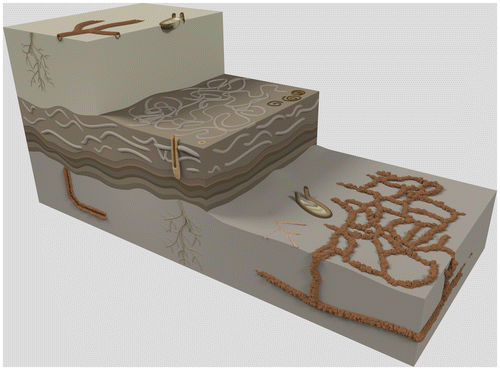Figures & data
Figure 1. (A) Geological map showing distribution of the Nankang Formation along the north-east Coast of Taiwan. Most observations were made at Fanziao promontory and on a few small islets just next to the Ruibin settlement. (B) The inset map shows the location of study area in north-eastern Taiwan.
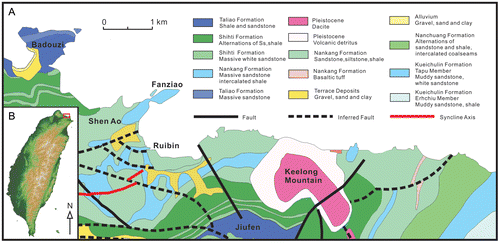
Figure 2. Simplified stratigraphic column of the Nangang Formation, which consists of about one and a half transgressive–regressive cycle. The sedimentary environments of the Nankang Formation fluctuated between shoreface and wave-dominated outer shelf (Modified from Yu & Teng, Citation1999).
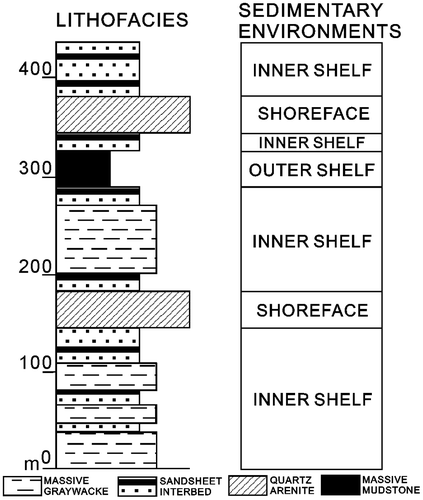
Figure 3. Stratigraphic column of Fanziao section showing a storm wave-dominated sedimentary environment that fluctuated between lower shoreface and inner offshore. The stratigraphic cycles are reflected in variations in the sand–mud ratio, as well as in the trace fossil assemblage.
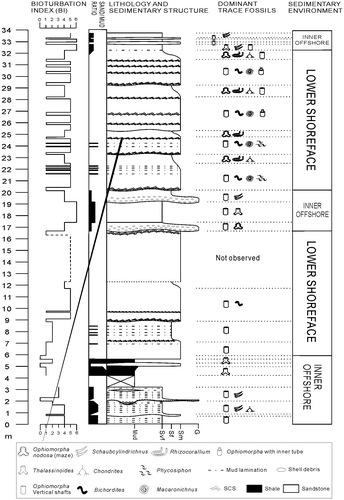
Figure 4. Photographs of the four morphotypes of Ophiomorpha distinguished at Fanziao. (A) Bedding plane view of O. nodosa which produces extensive mazes of thickly lined knobby tubes. (B) Bedding plane view of the thin, straight segments with widely spaced regular branches. (C) Bedding plane view of densely branching, dendritic tube systems. (D) Cross-section view of L-shaped shaft with inner tube. (E) 3D-reconstruction of the four types of Ophiomorpha.
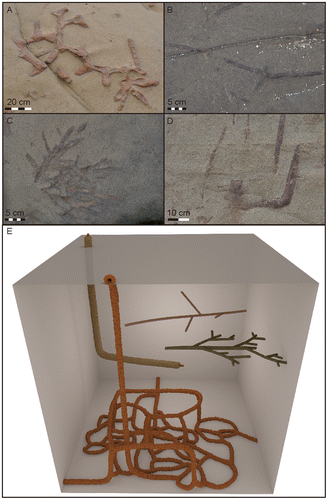
Figure 5. Different aspects of the vertical shafts containing inner tubes. (A) Vertical shaft with inner tube. Where the shaft abruptly turns horizontal the inner tube expands to fill the entire burrow. The continuation of the system into deeper levels visible in this specimen was rarely seen in other specimen. (B) Close-up showing the wall of the Ophiomorpha shaft and a distinct inner tube. (C) Bedding plane view of Ophiomorpha with a distinct inner tube lined by material of the similar material as the material of the outer wall. (D) The rare occurrence of twin inner tubes in a single shaft (bedding plane view).
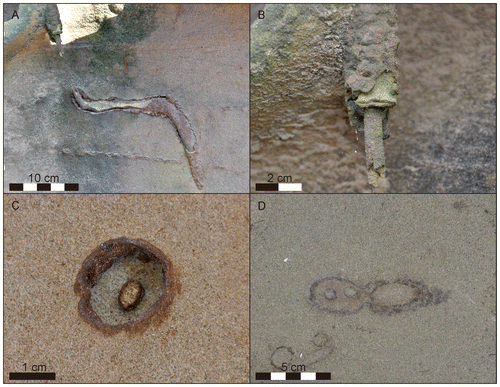
Figure 6. Scatter plot showing the relationship between outer tube diameter of Ophiomorpha and the diameter of the secondary inner tubes. The low correlation coefficient of 0.13 calculated through linear regression suggests that the diameter of the inner tube is largely independent of the diameter of the vertical shafts.
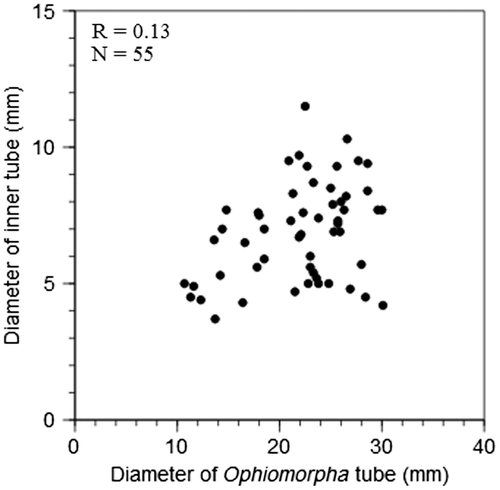
Figure 7. Two examples were relatively thin-walled vertical shafts possibly connect (A) or overlap (B) with thick-walled, knobby O. nodosa burrows. These possible connections could indicate that the vertical shafts with inner tubes are an integral part of the O. nodosa producers reproductive cycle.
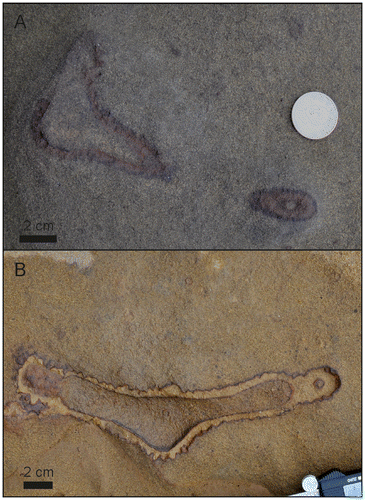
Figure 8. Thin sections of Ophiomorpha with inner tube. (i) Idealised cross-section of Ophiomorpha showing the positions of the studied components. (A) Ambient substrate outside of the outer wall. (B) Outer wall and boundary to ambient substrate. (C) Material between inner and outer wall. (D) Wall of the inner tube. (E) Material inside inner tube. Q = Quartz, F = Feldspar, G = Goethite, Gl = Glauconite. Note the presence of goethite as a major matrix mineral exclusively in both the inner and outer walls, while glauconite is absent in both the inner and outer walls. The matrix of the substrate and burrow fill consists of mixtures of clay minerals as matrix. It is evident that both walls are matrix supported, whereas the substrate and burrow fills are grain supported.
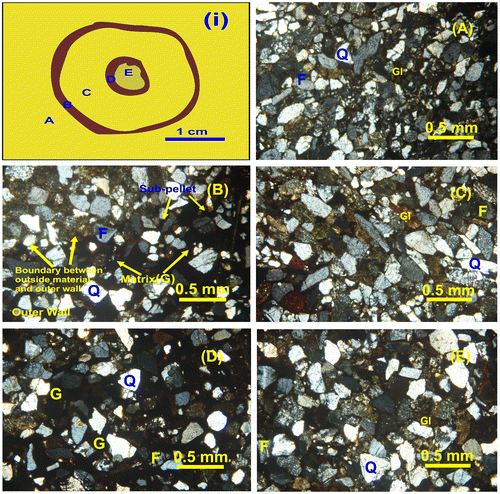
Figure 9. XRD analysis of the different components of the Ophiomorpha shaft and inner tube. The material of ambient substrate (A) and the tube fills (C and E) contains quartz and feldspars, while the wall material of both outer (B) and inner (D) tubes contain goethite. Q = Quartz, F = Feldspar, G = Goethite. Result is shown on 2θ between 20° and 30°.
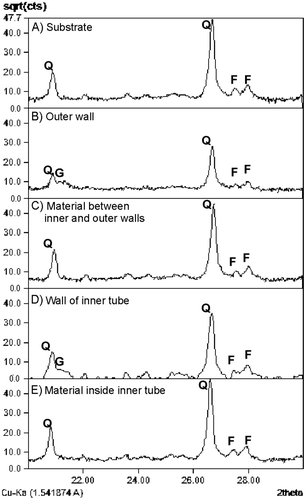
Figure 10. Both the wall of the outer (A) and the inner (B) tubes display distinct sub-pellets. While the sub-pellets of the outer tube wall are distinct and neatly organised, the sub-pellets of the inner tube wall are less well defined and less organised.

Figure 11. A 3D ichnofabric model of the lower shoreface environment in the Fanziao section. A transition layer of post-storm deposits (middle) is encased by two fair-weather layers. Biogenic features of the fair-weather beds are dominated by Cruziana ichnofacies, while in contrast, the ichnofacies of the post-storm bed is more Skolithos like. In the fair-weather deposit (bottom and top beds), the trace fossil suite is made up of O. nodosa, Rhizocorallium, Chondrites and two additional types of thinner Ophiomorpha, indicating Cruziana ichnofacies. The middle layer represents post-storm deposit and can be sub-divided into two parts: the lower part consists of swaley cross-stratification with rare vertical Ophiomorpha shafts, while the upper part is fully bioturbated by Bichordites and Macaronichnus. This suggests that these trace fossils represent an opportunistic colonisation of the substrate and that the colonising window of Bichordites and Macaronichnus is shorter than for Ophiomorpha. Consequently, a succession from swaley cross-stratification, Bichordites and Macaronichnus burrows to Ophiomorpha burrows can be expected. If fair-weather conditions extend long enough, an assemblage typical of the Cruziana ichnofacies will develop (top layer). In reality, the middle layer that represents frequent or severe storm-dominated conditions (Pemberton et al., Citation2001) may be much thicker than the beds with well-developed Cruziana facies and actually make up most of the massive sandstones in the Fanziao section. Either the time between two storms is too short for a biological assemblage to form, or the storms were so strong that the original substrate was swashed away. Evidence of frequent storm events are seen in the recurring superimposed succession of storm deposits that cut off the tops of the trace fossils.
